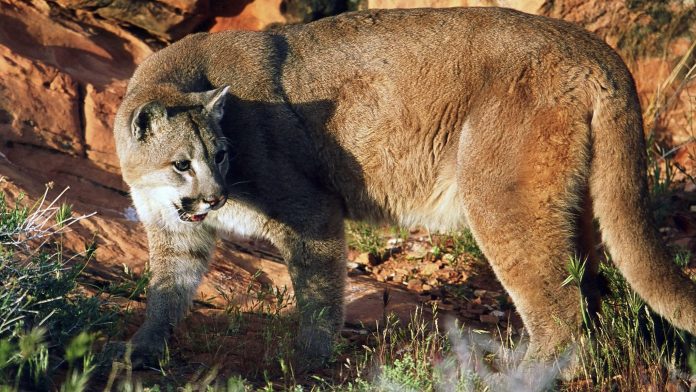SALT LAKE CITY, Utah, May 22, 2024 (Gephardt Daily) — Spring being sprung, it’s that time of year again for wildlife officials to suggest how best to manage your mountain lion encounters.
“Cougars, mountain lions, pumas: They have several different names, but these elusive predators can be found throughout Utah,” the state Division of Wildlife Resources announced Tuesday online.
“While cougar attacks are quite rare in the U.S., there is always the chance you may see a cougar on your doorbell camera footage or while you are out hiking this summer. If you do happen to encounter a cougar, there are a few simple steps you can take to keep yourself safe.”
Cougars are found throughout Utah, usually in the foothill and canyon areas, but also sometimes down in the valleys — especially during the winter months when they follow food-seeking deer, their preferred prey, to lower elevations, the DWR said. “Trends of population data indicate that cougar numbers in Utah have been growing steadily for the last few years.”
The DWR post did not include a current Utah cougar head-count, but a casual online search puts the number between 1,600 and 2,700.
The 2,700 estimate was hit in 2019, according to the Mountain Lion Foundation (mountainlion.org) a California-based advocacy group for the big cat. The foundation sued the DWR unsuccessfully last year trying to block plans to ease hunting restrictions on cougars.
The foundation says the number may be as low as 1,600 now, and argues a human is more likely to be killed by a pack of dogs than the reclusive cougar.
Nonetheless, the DWR advises:
Prevention
- Do not hike or jog alone.
- Maintain awareness in cougar country while hiking or jogging and avoid using headphones that block out your surroundings.
- Travel in groups and keep everyone together, including children and dogs.
- Make noise while hiking to alert cougars of your presence.
- Leave the area if you find a dead animal, especially deer or elk, since it could be a cougar kill.
- If you live in an area near deer habitat, do not leave children outside unattended, especially at dawn and dusk.
Encounters
- Never run from a cougar, since that could trigger the cougar’s instincts to chase.
- Maintain eye contact.
- Pick up children and pets or keep them very close.
- Stand up tall.
- Do not crouch or squat.
- Make yourself look bigger by raising and waving your arms or jacket above your head.
- Talk firmly in a loud voice, back away slowly and leave the area.
- Fight back if you are attacked! Protect your head and neck.
- If you are aggressive enough, the cougar will probably flee.
The National Park Services also advises:
- Maintain eye contact, and never turn away from the lion.
- Stand up straight, with arms above your head in order to appear larger.
- Back away very slowly in case the lion is guarding a kill or her den.
- If the lion approaches, throw rocks or sticks and yell at the animal.
- If the lion does attack, fight back. Unlike surviving a bear attack, if you play dead with a Mountain Lion, you will be.
- Remember above all DO NOT RUN! No cat can resist the instinct to give chase.
The DWR said there has been an increase in cougar sightings over the last few years, due to an increase in doorbell and security cameras and an increase in the number of people moving into cougar and deer habitat areas.
You should report a cougar sighting if:
- It has killed something in a neighborhood or yard.
- It exhibits aggressive behavior.
- It appears several times on your security cameras.
If you capture footage of a cougar on security cameras one time or see one from a distance in foothill areas, you do not need to report it. One-time sightings of cougars are typically when the animal is moving through an area, and it has often left by the time DWR biologists and conservation officers can respond.






